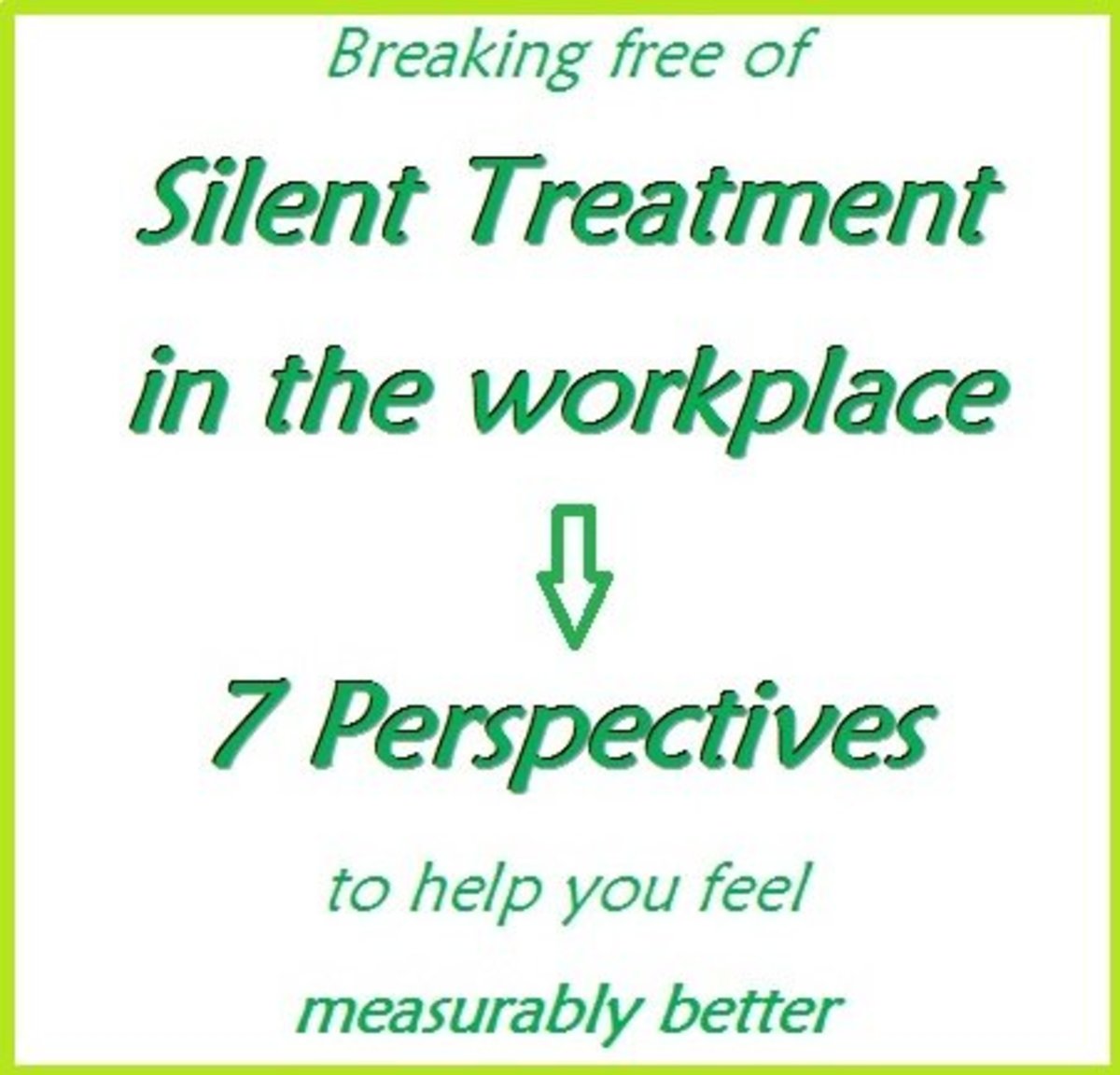How to Manage Employees with Mental Illnesses

by Amber Maccione
A business’ success is only as good as those within. Therefore, the well-being of each employee should be the concern of the employer. In today’s society, one’s health, whether physical or mental, is a very sensitive subject. Hence, there are some guidelines that an employer should follow when determining if an individual has a mental illness as well as how to approach them and encourage them to seek medical attention.
Three types of mental disorders that will be addressed in this paper are antisocial personality and borderline personality disorders along with schizophrenia. It is important that everyone understands the actions that may identify someone with one of these disorders as well as how to approach them and help them seek the help they need so that they can function as a productive member of this company. First, the disorders will be defined and how to identify someone with the disorder. Secondly, it will address how to approach someone and offer your support and help with finding treatment. Thirdly, the memo will discuss how to set up a section of your human resources department with resources to help those with mental disorders.
Antisocial Personality Disorder
Antisocial Personality Disorder
Antisocial personality disorder is a chronic mental illness which affects how a person thinks, perceives situations, and relates to others (Mayo Clinic 2013). Egocentrism is a big part of this. A person with antisocial personality disorder will do whatever they feel is right to them. They have no regard for right or wrong and the rights and feelings of others (Mayo Clinic 2013). Antagonism, manipulation, lies, impulsiveness, and violence are all character aspects of the person (Mayo Clinic 2013). Alcohol and drug abuse are common along with having problems related to work, family, and friends (Mayo Clinic 2013).
Boderline Personality Disorder
Borderline Personality Disorder
Borderline personality disorder is “a serious mental health disorder [that is] characterized by pervasive instability in moods, interpersonal relationships, self-image, and behavior” (RAINN 2009). If left untreated, the disorder can disrupt a person’s family life, career, any long-term goals, and a person’s self-identity (RAINN 2009). Someone that has borderline personality disorder tends to push others away from them. This could stem from their fear of being abandoned, so they push people away as a defense mechanism to avoid the person leaving them (Mayo Clinic 2012). Adults that have borderline personality disorder suffer from intense anger, impulsive actions, and frequent mood swings (Mayo Clinic 2012). (Maccione 2013).
Schizophrenia
Schizophrenia
Schizophrenia is a disorder that affects the brain making a person interpret reality abnormally through hallucinations and delusions. Their thinking and behavior is extremely disordered (Mayo Clinic 2014). Although it has been thought that a person with schizophrenia has split personalities or multiple personalities, this has been deemed false. Schizophrenia means “split mind.” It refers to the balance of emotions and thinking of the person. The balance is disrupted, hence the brain reading things incorrectly (Mayo Clinic 2014). This mental disorder is chronic and requires a lifetime of treatment and care for the individual (Mayo Clinic 2014).
Signs
Some of the signs that a person in the workforce might have a mental disorder are deteriorating work performance, change in personality, social withdrawal, appearing emotionally distant or detached, decreased motivation and interest in work, and trouble concentrating (Martin 1012). A person with a personality disorder (PDI) can also be identified by their deviation from the norm in the following categories: cognition, affectivity, interpersonal functions, and impulsivity (Lambrecht 2010). They are also manipulative and self-centered (Lanbracht 2010). Other signs for a person with schizophrenia are their disorganization in work and thinking, anxiety and phobias, and aggressive behavior (Mayo Clinic 2014).
Steps
It is important for all employers to realize that helping employees with their mental illnesses is cost effective to the company (Martin 2012). It helps to improve the attendance of the individual along with his productivity and quality of work (Martin 2012). Therefore, there needs to be a procedure in how to approach an individual thought to have a mental disorder as well as a person trained in human resources to help with finding support and medical help for the employee, including medical insurance.
The first step to approaching a person is to let them know you are concerned because of what you have noticed in their behavior as it relates to work (Martin 2012). This step helps the person realize their flaws at work in case they weren’t aware of it as well as gives the employer something to point back to when explaining their reasoning for why they want the employee to seek treatment for a possible mental disorder. Pointing out that someone might have a problem can be confrontational. It is important that you handle it with caution.
The second step involves explaining the resources that the company has to help the individual. Ensure him that what is talked about in the private meeting is confidential (Martin 2012). Encourage the individual to get counseling (Martin 2012). Make sure the individual understands that you are there to support him and give him the accommodations (having a desk or office away from distractions, changing shift hours because of medications, letting him make up hours during lunch break or after work because of doctor appointments, and making expectations of job clear and written down) needed to help him succeed at work (Martin 2012). Once diagnosed by a doctor and it is clear the individual has a mental disorder, ADA (Americans with Disabilities Act) protects the employee from being discriminated against because of their disability. It also requires the employer to give adequate accommodations to the individual so that he can succeed in the work place (Martin 2012).
Another aspect of confronting a person that might have a mental disorder is to be optimistic and non-judgmental (National Institute for Health and Clinical Excellence 2009). It is important that they see hope and that management of the disorder is possible (National Institute for Health and Clinical Excellence 2009). It is important that treatment is encouraged, positive reinforcements are given, and regular one-on-one meetings with the individual are set up to review his work progress and hold him accountable (National Institute for Health and Clinical Excellence 2009).
Communication between the company and the clinicians is important (National Institute for Health and Clinical Excellence 2009). This is where the specialized human resources employee comes into play. It is important to have a one person in human resources to handle these personnel files for two reasons: it helps keep the person’s disorder confidential (only three people know at work – the employer, the individual, and the person handling these types of resources) and it helps deliver quality communication between the company and the clinicians handling the individual with the mental disorder.
Other ways that the specialized human resources employee can be of use is through helping the individual get other resources besides seeing a clinician. She can offer cognitive behavioral interventions that involve problem solving skills training. She could schedule in-house sessions for both those that have a mental disorder and even those that don’t but need help with problem solving (National Institute for Health and Clinical Excellence 2009). She can also provide a handout that explains the guidelines for business conduct and have everyone sign it and post it so that each employee understands the behavior expected from them in the workplace. Bringing in an expert to speak on mental disorders would be helpful so that all employees are aware of the signs and know how to handle someone that may be displaying such signs of a mental disorder. Managing the Employee Assistance Program could also be a part of her job to ensure all employees, especially those with mental disorders, have access to those resources. She can assist with researching insurance carriers that offer mental health coverage to help those employees with to have coverage and avoid paying out of pocket (Open Minds Open Doors).
Do you work with someone that has a mental disorder
Conclusion
It has been researched that 30% of all business failure is linked to deviance. Part of that 30% are those that have mental illnesses (Lambrecht 2010). Therefore, it is important for all companies to have a plan in place on how to approach those that may have a mental disorder and also a plan on how to support those with the disorder through their human resources department. The employer is “responsible for maintaining the health of their work environment” (Lambrecht 2010). Understanding mental disorders and knowing the signs is part of doing that along with having resources to help support the individual. Employers must be accommodating, must understand how to create a work-life balance, and implement and enforce policies that allow the disabled individual to get the help they need and be able to return to work (Open Minds Open Doors). In doing this, a company is on its way to being successful.
References
Lambrecht, J. S. (March 2010). “Managing the Personality Disordered Individual: Recognizing and Responding to Workplace Deviance.” NorthHennepin Community College. Retrieved from http://www.hr.mnscu.edu/training_and_development/documents/Managing_the_Persona.pdf
Maccione, A. (2013). “Borderline Personality Disorder & Criminal Behavior.” Hubpages.com. Retrieved from http://ambercita04.hubpages.com/hub/Borderline-Personality-Disorder-Criminal-Behavior
Martin, C. P. (10 October 2012). “Schizophrenia and the Workplace: Tips for Supervisors.” Boeing. Retrieved from https://www.achievesolutions.net/achievesolutions/en/boeing/Content.do?contentId=3962
Mayo Clinic. (12 April 2013). “Antisocial Personality Disorder.” Retrieved from http://www.mayoclinic.org/diseases-conditions/antisocial-personality-disorder/basics/definition/con-20027920
Mayo Clinic. (2012). “Borderline Personality Disorder.” Retrieved from http://www.mayoclinic.com/health/borderline-personality-disorder/DS00442
Mayo Clinic. (24 January 2014). “Schizophrenia.” Retrieved from http://www.mayoclinic.org/diseases-conditions/schizophrenia/basics/definition/con-20021077
National Institute for Health and Clinical Excellence. (January 2009). “Antisocial Personality Disorder: Treatment. Management, and Prevention.” Retrieved from http://www.nice.org.uk/nicemedia/pdf/CG77NICEGuideline.pdf
Open Minds Open Doors. (n.d.) “Support an Employee.” Mental Health America. Retrieved from http://www.mentalhealthamerica.net/support-employee
RAINN. (2009). “Borderline Personality Disorder.” Retrieved from http://rainn.org/get-info/effects-of-sexual-assault/borderline-personality-disorder
Copyright © 2014 http://ambercita04.hubpages.com/ All Rights Reserved
© 2014 Amber






